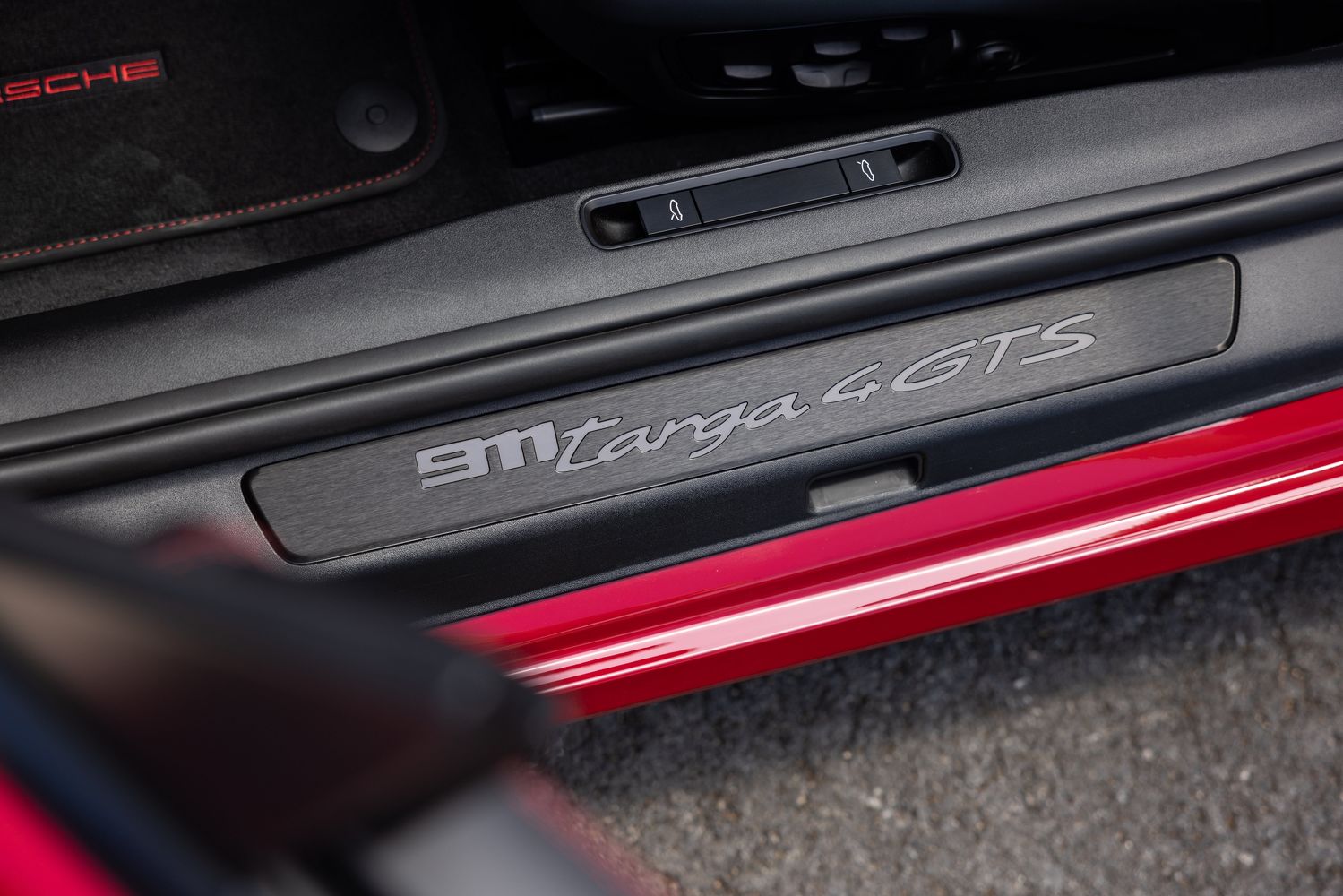The Type 992.2 911 Targa 4 GTS’s combination of T-bar and T-Hybrid makes it a serious bit of kit that is a hoot to drive
Malaga, Spain - As far as pose-worthiness is concerned, the gorgeous silhouette, bodacious curves and sexy wraparound rear windscreen of the type 992 Porsche 911 Targa 4 GTS tick all the right boxes as far as this author is concerned.
What’s not to like? The latest 992.2 iteration of the 911 Targa combines the best of the hard-top and drop-top worlds.
However, it also one-ups its predecessors by throwing in a huge dollop of tarmac terrorising ability, compliments of its new “T-Hybrid” powertrain, which you would have read about in greater detail in our 992.2 C2 GTS review several months back.
Now, a little background on the Targa’s return to its roots: The type 991 911 Targa in 2014 marked the return of the distinctive T-bar roof, a design element that can be last traced back to the air-cooled 964 Targa of the mid-1990s.
Starting from the 993 (which succeeded the 964) onwards right up to the 997.2, the 911 Targa featured a retractable sliding glass-roof design. However, critics felt this “oversized glass-roof” was far removed from the vibes of the original 911 Targa.
With its combination of a fixed structure and partially removable roof, the 911 Targa model was created in the mid-1960s to comply with crash safety standards in the USA, especially in the event it overturned.
Classic 911 Targas up to the 964 featured a manually removable roof directly above the front occupants, while the rear windscreen and T-bar served as a “crash structure” to protect the occupants if the car flipped.
Advancements in technology were responsible for a return to classic Targa form in the 991 generation, with the finely-tuned roof kinematics instrumental in fully-automating the Targa transformation process.
It’s a beautifully orchestrated mechanical manoeuvre that sees the fine machinations of the rear windscreen and rear-deck, all of which is to stow away / deploy a sliver of fabric directly above the occupants.
This classic design took awhile to make a comeback, because the three generations prior to the 991.1 (997, 996 and 993) were blighted by a retractable, sliding glass-roof design.
Happily enough, the classic design that returned in the 991 has continued into the 992 generation of 911, with the 992.2 seeing the injection of some punchy pizazz thanks to the new GTS – the T-bar model now has a T-Hybrid to go with it!
When the 991.2 Targa 4 GTS moved from the 991.1’s nat-asp to a turbocharged engine, the model developed the bite and the bark to go with its bodacious looks, not least because of the Targa’s extra weight.
If you’re wondering, the 992.2 Targa 4 GTS tips the scales at 1745kg, versus the C4 GTS Cabriolet’s 1725kg and C4 GTS Coupe’s 1645kg. However, there’s a small matter of weight distribution, especially with the additional mechanical components to open/close the rear windscreen.
Like on the C2 GTS Coupe we razzed around the Ascari circuit, the latest 992.2’s “T-Hybrid” turbocharged engine has further transformed the performance credentials of the Targa 4 GTS.
The purpose of the electric motors (integrated into the 8spd PDK gearbox and the eTurbo) is to serve as “torque-fillers”. They all but eliminate turbo-lag to deliver a seamless surge from standstill to the flat6 engine’s stinging 7500rpm red-line. This means no all-electric mode and no plug-in charging, just fast and furious forward propulsion to the tune of 541hp and 610Nm.
Since the 997, the Targa has only been available in all-wheel-drive guise, which provides all-weather surefootedness to the 911.
This is particularly relevant given the Targa 4 GTS is likely to be used in rain / shine / snow / sleet conditions, as opposed to track outings like its sharp and incisive Coupe sibling.
Traditionally, the “GTS” model is the Goldilocks choice, because of its sweetly-balanced mash-up of sportiness and daily-drive sensibility, in terms of both the motorsports-inspired aesthetic elements, as well as performance statistics.
For the 992.2, the gap between GTS and Carrera models has never been wider, with a stupefying real-world pace to the hybridised GTS that will see it keep up with most sporting machines. The 992.1 Turbo S lead-car certainly found it hard to shake-off the 992.2 C2 GTS Coupe on the straights of the race-track during the launch.
Its blistering pace is accompanied by a raging soundtrack that doesn’t just put a big smile on the driver’s face, but also serves as ample warning to potential contenders.
With all that effort spent validating EVs, it’s great to enjoy the engagement of an unapologetic back-to-basics precision driving instrument that looks, feels and drives the part of a sportscar.
On the fast move, you’ll quickly acclimatise your driving style to that added weight in the Targa 4 GTS’s rear. Truth be told though, with rear-axle steering as standard, it isn’t as cumbersome to handle as you’d imagine.
It's possible to hustle the Targa 4 GTS at a blistering, white-knuckle pace, but you’ll also discover it is the sort of car you’d be happy to slow down and smell the flowers in.
With the different iterations of the 911, it’s never about being the fastest or lightest or most powerful.
Instead, it is how Porsche injects heart and soul into ensuring all the individual elements work together to create an engaging and spirited motoring experience that indubitably identifies as a 911 that makes them such a hoot to drive.

PORSCHE 911 TARGA 4 GTS (type 992.2)
Engine 3591cc, flat-six, turbocharged
Battery, 1.9kWh, 400V
System Power 541hp at 6,500rpm
System Torque 610Nm at 1,950rpm - 6,000rpm
Transmission 8-speed PDK dual-clutch
0–100km/h 3.1secs
Top speed 312km/h


